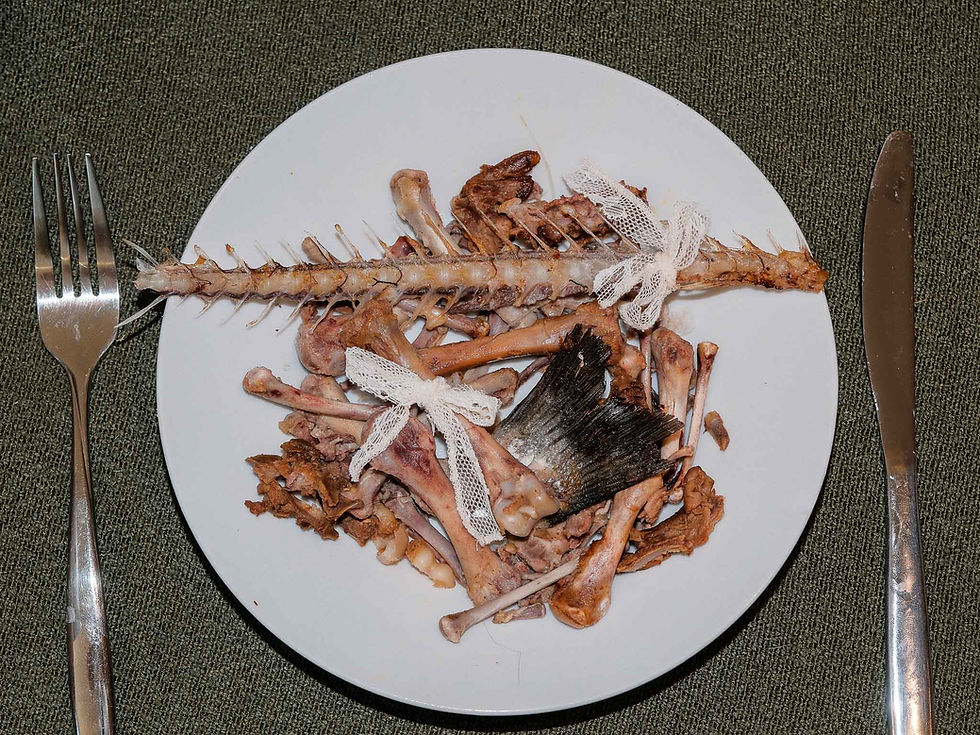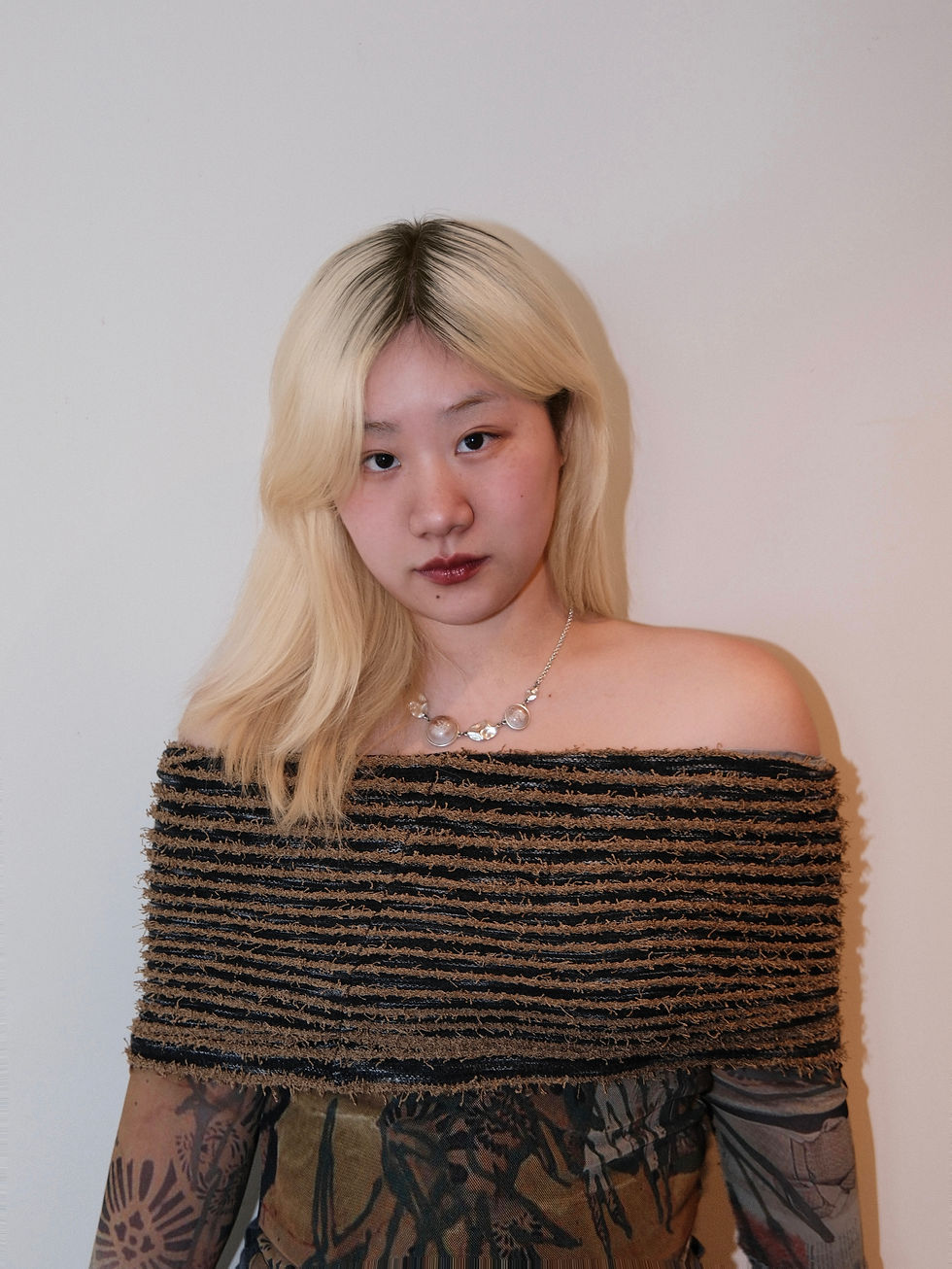Media Platform &
Creative Studio



Magazine - Art and Culture
Wanting Wang: Disrupting the Architecture of Order
Joana Alarcão
London-based Chinese artist Wanting Wang transforms domestic objects into political statements. The artist's latest series, Above the Rules (2025), disrupts household arrangements to expose hidden control mechanisms, repositioning cups, bones, and care items in compositions that challenge our assumptions about order and normalcy. This review examines how Wang's practice of gentle subversion offers an alternative to the sledgehammer approach of institutional critique, proposing instead that profound cultural change might emerge from the radical act of paying attention.
1 August 2025


In an era where a war for attention permeates any form of content, and institutional critique announces itself with the grace and delicacy of a sledgehammer, the contemporary Chinese artist Wanting Wang operates on the edge of everyday order. Quietly but persistently carving a path forward.

For the past five years, the London-based artist has exhibited a visual language that confronts in a whisper rather than shouts. Her work resembles a dance, where the body is contracted in extreme labour, yet everything remains in perfect harmony—a quiet meditation that embodies the force of an ideological earthquake.
Uniquely positioned between two cultural forces, Wang’s practice traverses the existing distance between China’s systematic order and London’s cultural plurality, creating a tensive narrative that interrogates what she calls "the silent violence embedded in structures of control, care, and aesthetic norms." Her artistic method embodies a heightened sensitivity, a rebellious negotiation between perceived expectations and external contemporary narratives.

The Aesthetics of Dysfunction
In her 2025 work Above the Rules, Wang demonstrates a photographic language of what might be termed "productive dysfunction". The series of photos intervenes in domestic tableaux—leftover animal bones, cups, home utensils, and body care items—repositioning them in compositions and angles that hover between the logical and chaos. However, do not interpret this series as disorder and absurdity masquerading as critique; rather, it is a deliberately orchestrated disruption and disobedience that exposes the arbitrary nature of our ingrained, methodical daily acts.
With a lineage in the conceptual tradition of Sarah Lucas's irreverent visual puns and Fischli & Weiss's precarious sculptures, Wang's series feels distinctly contemporary in its engagement with what she identifies as "the subtle violence of neatness". Her photographs, bordering on the confessional, transform the domestic setting into an intimate act of disobedience and insurgency.
Here, the intent appears simple, yet it is meticulously calculated. By devoting the same care and attention typically reserved for precious objects to everyday utensils, these items become elevated in status. Through this approach, Wang’s material choices and arrangement methods elevate the object to the status of art, prompting us to question what determines whether something is deemed worthy of attention. The final compositions evoke Mona Hatoum’s ability to transform the familiar into unsettling, even threatening pieces, albeit with a subtle touch of cognitive dissonance.

The Politics of Perception
One of the most interesting aspects of Wang’s practice is how she is able to stay away from mere surrealism play through an acute sensibility to the political undertones of aesthetic order. Her practice operates on the preconceived notion that every action, object, and domestic configuration carries an embodied symbolism about societal expectations around social roles and systems of control.
This high-frequency political consciousness is even more evident in her upcoming project, which shifts from a domestic object standpoint to natural forms. In this conceptual and visual wave, the artist plans to photograph fruits, organic matter, and plants that have been "intervened upon", utilising acts of stitching, wrapping, and compression as symbolism for control mechanisms masquerading as care.
This project expands the artist’s reach from domestic objects into the realm of our individual relationships with the nature that surrounds us, challenging our constant need to transform the natural world into our own image.

A Methodology of Gentle Subversion
Wang’s creative practice tip on a balancing act – maintaining a complex conceptual language while avoiding visual chaos. This reveals a deep and sophisticated commitment to understanding how images can carry an ideological weight.
“One challenge was maintaining visual simplicity while embedding layered meaning. The surreal tension needs to be subtle but sharp—too much chaos, and it loses precision; too little, and the critique is diluted. I resolved this by editing ruthlessly, keeping only the compositions that carried the right balance of control and collapse.” the artist explains.
Through her conceptual narratives, photography serves Wang’s purpose perfectly, as it gives both space for the intimate and first-person encounters and space for viewers to question their own assumptions about normalcy and order. Her artistic vision extends beyond mere aesthetic intervention toward what she describes as creating "conceptual ruptures that stay with people".

In a cultural moment defined by extremes, Wanting Wang’s practice offers an alternative path, suggesting that the most profound changes might stem from the simple act of paying attention. This radical proposition has the potential to create lasting disturbances in consciousness rather than momentary shock, fostering a long-term project of cultural transformation.
Learn more about Wanting Wang's practice here.
Cover image:
Above the Rules by Wanting Wang.
All images courtesy of Wanting Wang.


Wanting Wang is a London-based visual artist and photographer whose work examines how ecological, gendered, and perceptual systems shape and distort the ways we see and are seen. Holding a Master’s degree in Television from the University of the Arts London, her cinematic background informs her distinctive visual storytelling.
Her research-driven practice draws on philosophy and cultural theory to explore the shifting boundaries between the organic and the constructed. Working across photography, installation, and the poetics of perception, she focuses on thresholds— between life and decay, clarity and blur, order and collapse. Through visual and spatial experimentation, she investigates how bodies, objects, and environments are shaped by both natural and constructed systems. Often working at the edge of the seen and unseen, she uses light, shadow, and composition to disrupt familiar narratives and transform fleeting moments into compelling visual inquiries.
Wanting’s recent exhibitions include EL ORDEN DEL CAOS Exposición colectiva (Spain, April 2025), PARTLY CLOUDY (London, April 2025), INTERGRADE (London, April 2025), and LIQUID SKY | III Edizione (Italy, May 2025). Her work embraces contradiction—finding beauty in decay, structure in fragments, and resistance in silence—opening poetic spaces to rethink visibility, embodiment, and belonging within ecological and social systems.

_Lauren%20Saunders.jpg)

